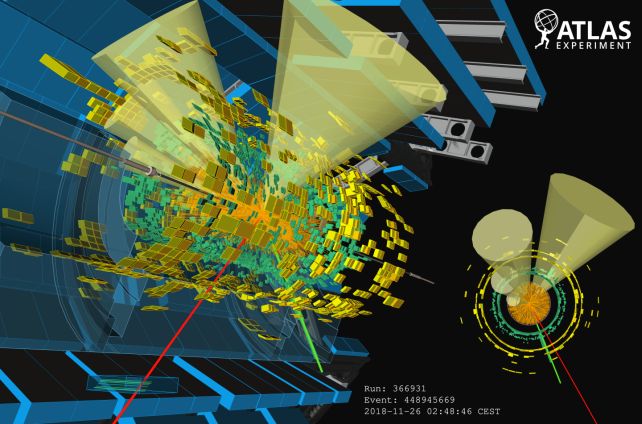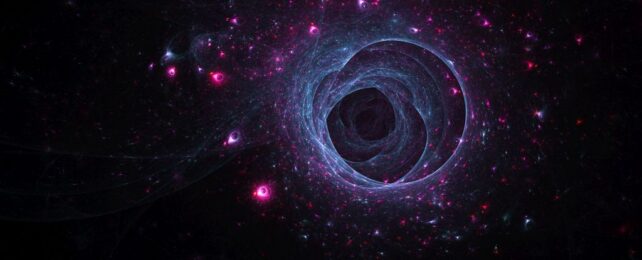A pair of top quarks has been detected in the detritus spraying forth from the collision of two atoms of lead.
It's the first time that this specific quark-antiquark pair has been spotted in a collision between two nuclei. The detection strengthens evidence that all six quark flavors existed at the dawn of time, in the soupy quark-gluon plasma thought to have suffused the Universe in the moments after the Big Bang.
This means that we're a step closer to taking new measurements of this primordial soup, and gleaning new insights into how our Universe formed from the very beginning.
Quark-gluon plasma is what you get when the elementary quarks and gluons that are normally bound up inside protons and neutrons are loosed from their confines and slosh together in a loose, interacting "soup" under extremely energetic conditions.
The problem with studying this state of matter is that quarks decay very, very quickly, in just a tiny fraction of a second. The quark-gluon plasma that emerged after the Big Bang only existed for a few millionths of a second before the particles blobbed together to start to form normal matter, a process called hadronization.
To study the quark-gluon plasma, physicists use particle colliders like the Large Hadron Collider to smack heavy particles together. These collisions produce a shower of particles that pass through the quark-gluon plasma state on their way to forming normal matter. Scientists can take measurements of the products of this process to probe the quark-gluon plasma.
Top quarks are the heaviest of the six quark flavors, and are an especially valuable tool for studying the evolution of quark-gluon plasma. However, because they are the heaviest, their lifespan is the shortest, just 10-25 seconds. That's shorter than the hadron formation timescale, which means they decay before hadronization can take place.
The quark-gluon plasma generated in heavy ion collisions lasts 10-23 seconds; so the top quarks are gone before the plasma as a whole, making them particularly difficult to study.

Often, the particles physicists are looking for are not detected directly, but rather are traced back from the products they decay into, and this is the case for the new research. In the Large Hadron Collider, a team of physicists with the ATLAS Collaboration detected the formation of a top quark pair in their decay products via the dilepton channel of decay.
In this process, the top quarks decay into a bottom quark and a W boson; the W boson then decays into a neutrino, and either an electron or a muon. The collaboration identified this process in collisions between lead atoms with a statistical significance of 5.03 sigma – clearing the five-sigma threshold for a significant detection.
It's the first time a top quark pair production has been observed in a collision between heavy nuclei. A previous paper describes the production of a top quark pair in a collision between a lead ion and a proton; the new result goes a step further, offering a way forward to future studies of the quark-gluon plasma.
"The observation of this process consolidates the evidence of the presence of all quark flavors in the pre-equilibrium stage of the quark-gluon plasma, similar to conditions in the early Universe," the researchers write in their paper.
"This result paves the way for further studies of the quark-gluon plasma and the physics of the early Universe with top quarks."
The research will be published in Physical Review Letters.
